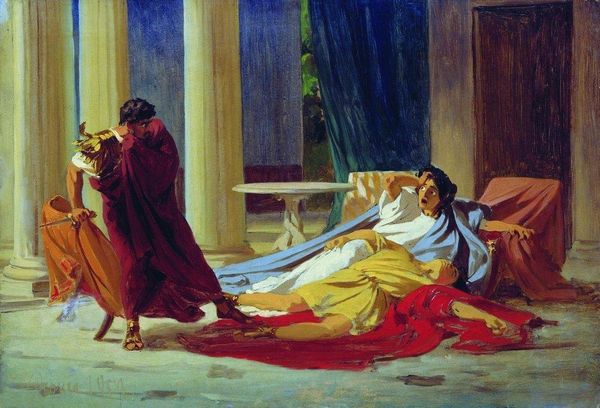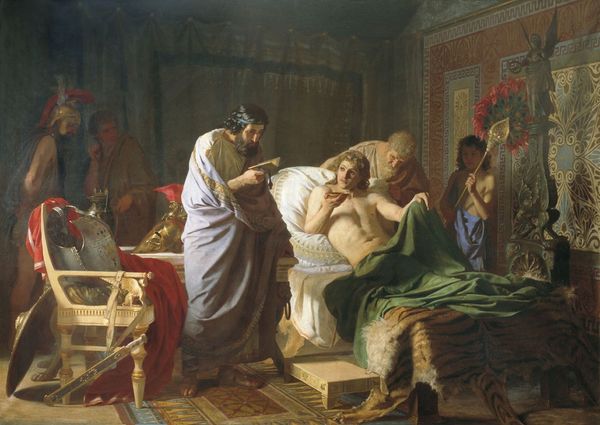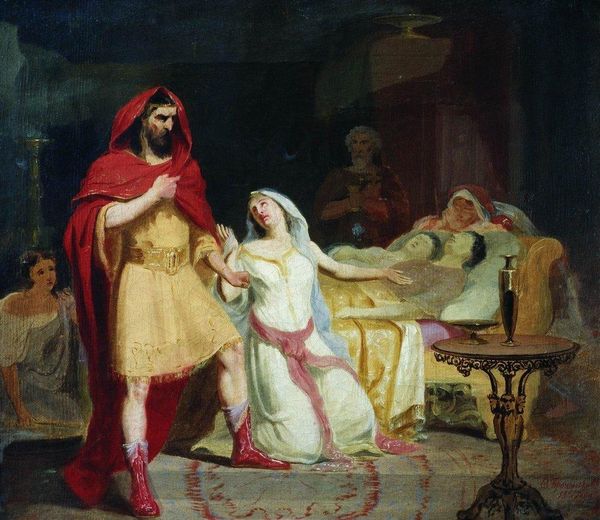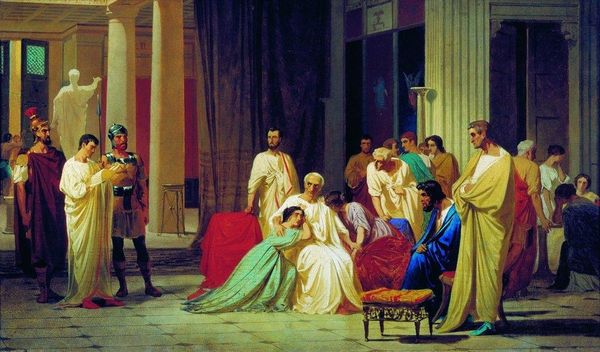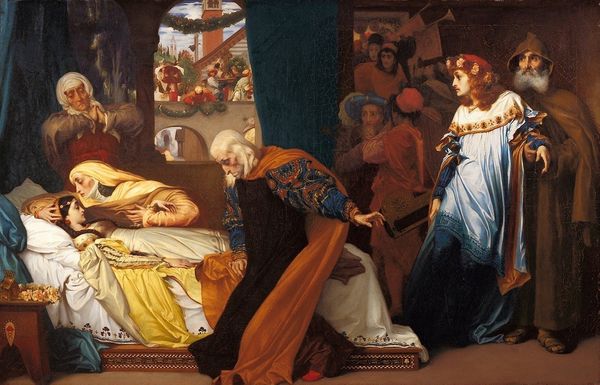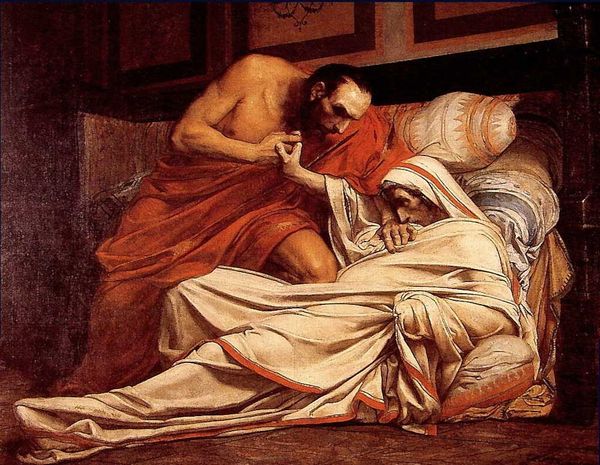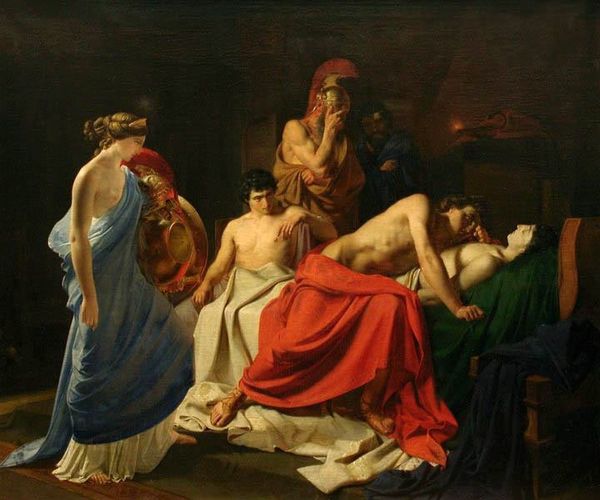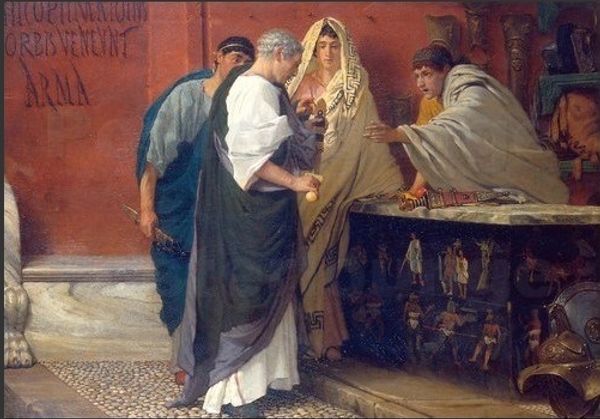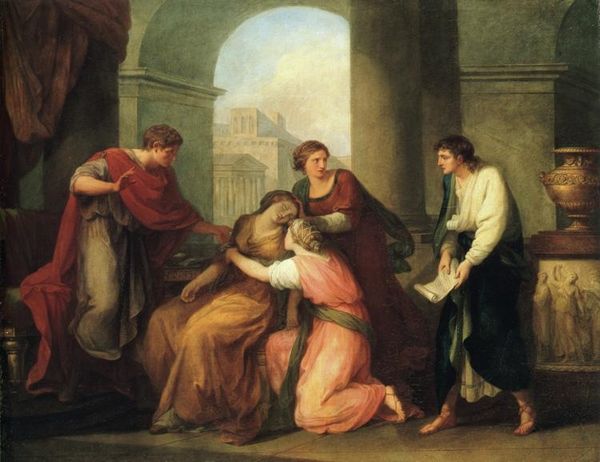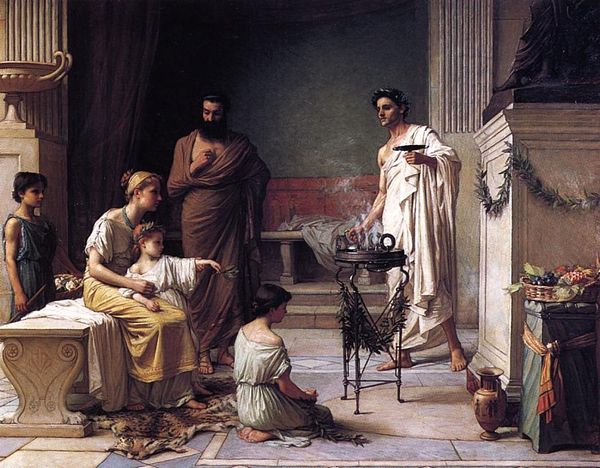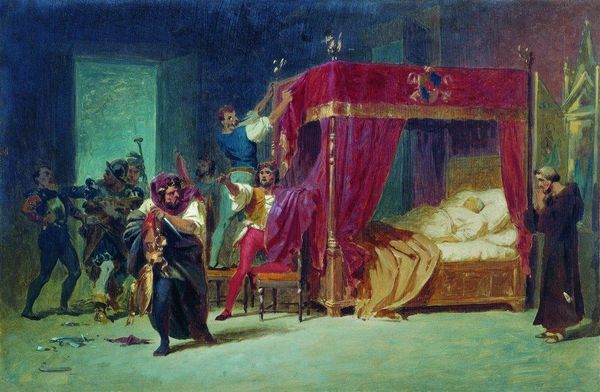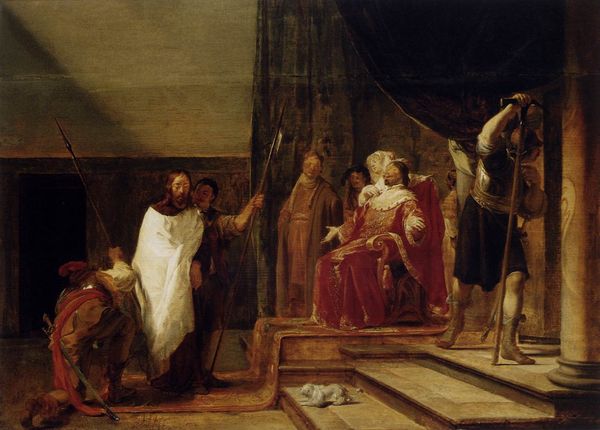
painting, textile
#
portrait
#
painting
#
death
#
textile
#
figuration
#
genre-painting
#
history-painting
#
realism
Dimensions: 49 x 63 cm
Copyright: Public domain
Curator: What a dramatic scene! This painting is titled "Murder Scene," by Fyodor Bronnikov, completed in 1859. Immediately, the use of colour strikes me as powerful – a violent contrast in an otherwise subdued space. What do you make of it? Editor: It is compelling. The saturated reds and blues definitely command attention and heighten the tension in what feels like a confined, upper-class interior. What can you tell me about the historical setting represented here? Curator: Well, Bronnikov situates us squarely within a staged vision of the ancient world. He was part of a movement called Academic Realism. Paintings like this one reflected the interest in archaeological accuracy blended with a certain theatricality to tell morally instructive stories often drawing from classical literature. The focus wasn't just on what happened but also on evoking appropriate emotional responses. Look at the grief and accusatory gaze directed towards the possible perpetrator! It invites the viewer into a moral judgement. Editor: And how does the physical setting influence that interpretation, considering its potential elite status indicated by the fabrics and decor? How might viewers at the time have perceived this type of constructed image? Curator: I think we can’t ignore the context of art academies and the power they held. Paintings like these were designed for display in very public salons, subject to intense scrutiny and discussion. Academic painting aimed to educate but also to cement a specific understanding of history, morality, and perhaps, class structures. There is a theatrical drama, a way to educate about consequences, but filtered through a classist gaze. Editor: I agree. It speaks to power, violence, and justice but presents those themes in a carefully curated, arguably sanitized version. And it presents that power in such an upper class light that there's the tension: who exactly is benefitting? Curator: So it’s not a neutral depiction, definitely steeped in contemporary values, as many “historical” paintings tend to be. Editor: Precisely. We’ve looked a bit deeper at how institutions use the artistic imagination to shape interpretations of the past and our contemporary reality. It gives me a lot to reflect on concerning history paintings today. Curator: I will be considering those powerful gazes today.
Comments
No comments
Be the first to comment and join the conversation on the ultimate creative platform.
